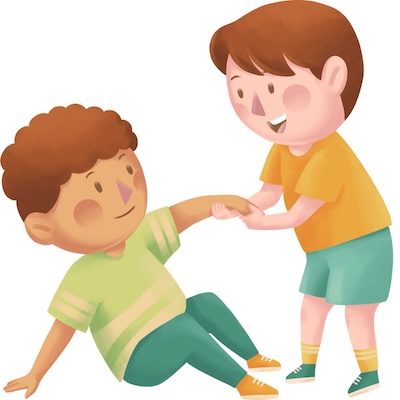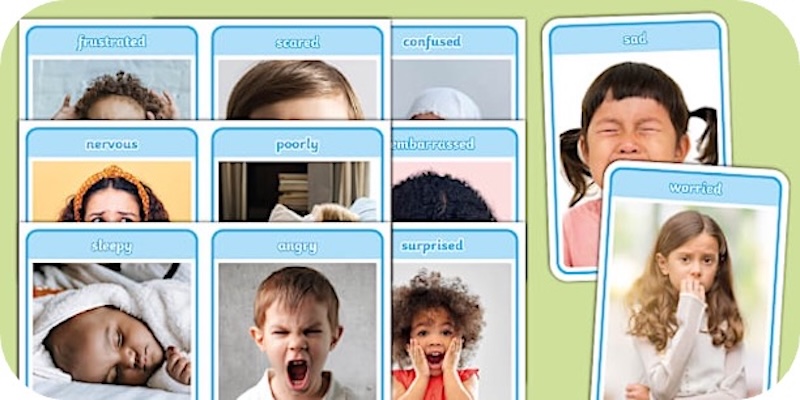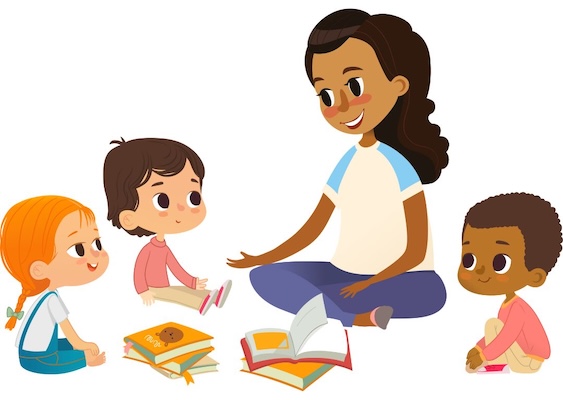Teaching young children to understand and manage their emotions is just as important as teaching numbers or the alphabet. Social Emotional Learning (SEL) is the foundation for a child’s success in school and life. It helps children build confidence, empathy, self-regulation, and positive relationships—all essential life skills.
At Kindiedays, we believe in learning through play. This guide will help you bring world-class SEL practices into your early years program using playful methods.

🌈 What is Social Emotional Learning (SEL)?
Children who possess healthy socio-emotional skills are more likely to succeed in school, at work, and in life.
According to Pathways, Socio-emotional skills help children to:
- Make friends and keep friendships
- Understand how others feel
- Gain confidence
- Resolve conflicts
- Manage stress and anxiety
- Learn social norms
- Make appropriate decisions
- Resist negative social pressure
- Learn strengths and weaknesses
- Gain awareness of what others are feeling
Strong emotional skills in early childhood are linked to better academic performance, stronger mental health, and more meaningful relationships later in life.
In the early years, SEL is best taught through play, routine, and warm relationships, not lectures or worksheets.
Download a brochure by Pathways about the development of Socio-Emotional skills
🎲 5 Games to Teach Emotions in Preschool
Here are five hands-on, low-prep games that make SEL fun and meaningful for young children.
1. Emotion Charades – Let Faces Speak!
What you need: Emotion cards with pictures or words
How to play: One child picks a card and silently acts out the emotion. Others guess which feeling it is.
Why it works:
Children learn to recognize facial expressions and body language. This builds empathy and emotional vocabulary.
Tips for teachers:
- Use real children’s faces rather than emojis for better recognition
- Ask follow-up questions like “Have you ever felt this way?”
- For shy children, let them guess before acting

2. Feelings Bingo – Match Emotions to Experiences
What you need: Bingo cards with faces or emotion names, and a list of short situations (e.g., “You lost your toy”)
How to play: Read out a scenario, and children mark the emotion they think matches.
Why it works:
It helps children understand the connection between everyday situations and emotions, making emotional vocabulary relatable and practical.
Ideas to extend:
- Let children share their own examples: “I felt angry when…”
- Use it during circle time to promote listening and turn-taking.
3. Catch-a-Feeling – Talking Ball Game
What you need: A soft ball or beach ball with different feeling faces drawn on it
How to play: Toss the ball around the group. When a child catches it, they name the emotion their hand lands on and describe a time they felt it.
Why it works:
This encourages children to discuss real-life emotions, listen to one another, and develop empathy.
Helpful tips:
- Keep it short and playful—1-2 sentences per child
- Begin with basic emotions (happy, sad, angry, scared) and slowly introduce more (jealous, excited, proud)
4. Fishing for Feelings – Magnetic Game
What you need: Printable emotion cards with paper clips and a simple fishing rod with a magnet
How to play: Children “fish” for a card and name the emotion. Older children can describe when they’ve felt that way.
Why it works:
Combines tactile learning with emotional awareness. Great for fine motor development, too!
Variations:
- Add coping strategies: “What can we do when we feel angry?”
- Create a class feelings board with their favorite fish!
5. Feelings Roll & Create – Playdough Expression Time
What you need: A dice with different emotions written or drawn on each side, and playdough
How to play: Children roll the dice, then make a matching face out of playdough.
Why it works:
Combines creativity with SEL, supports self-expression, and strengthens fine motor skills.
Classroom use:
- Use during calm-down time or free play
- Let children explain their creations: “This is my sad face because the toy broke!”

🧩 Integrate SEL into Daily Preschool Life
SEL doesn’t have to be a separate subject. Here’s how to embed emotional learning into daily routines:
|
Preschool Moment |
SEL Strategy |
|
Morning arrival |
Greet each child by name and ask how they feel |
|
Circle time |
Discuss feelings of storybook characters |
|
Transitions |
Use visual emotion charts for children to point to |
|
Free play |
Coach children during conflicts, not scold |
|
Teacher modeling |
“ I feel tired today. I’m going to take a deep breath.” |
Small moments, repeated daily, help children develop lasting emotional skills.
💡 Quick Tips for Preschool Teachers
Social Emotional Learning is not a luxury—it’s the heart of meaningful preschool education.
- Start simple – Begin with 3–4 emotions and add more gradually
- Use real images – Avoid abstract emoji faces with toddlers
- Keep it playful – Children learn best when they’re having fun
- Adapt to age – 3-year-olds may point to pictures; 5-year-olds can share stories
- Create consistency – Use similar language at school and encourage parents to do the same
The best part? You don’t need fancy equipment or long training sessions.
Interested in taking your preschool’s SEL approach to the next level?
Kindiedays offers more than ideas—we provide:
- Ready-to-use lesson plans inspired by Finland’s world-leading early education
- Digital tools to document children’s emotional growth and share updates with parents
- Teacher workshops to build confidence in facilitating SEL, especially for Indian preschools
All our content is tailored to align with your local curriculum, language, and culture, while incorporating global best practices.
🎯 Book a FREE Demo Today
In just 30 minutes, we’ll show you how your preschool can start using Kindiedays – easily and affordably.
Discover how Kindiedays can transform your preschool into a center of excellence.

👉 Click here to schedule a demo on Zoom or contact me on WhatsApp!
I look forward to meeting you.
Milla van der Burgh
PS Join our official WhatsApp group 👉 click here to join the group!
.png)